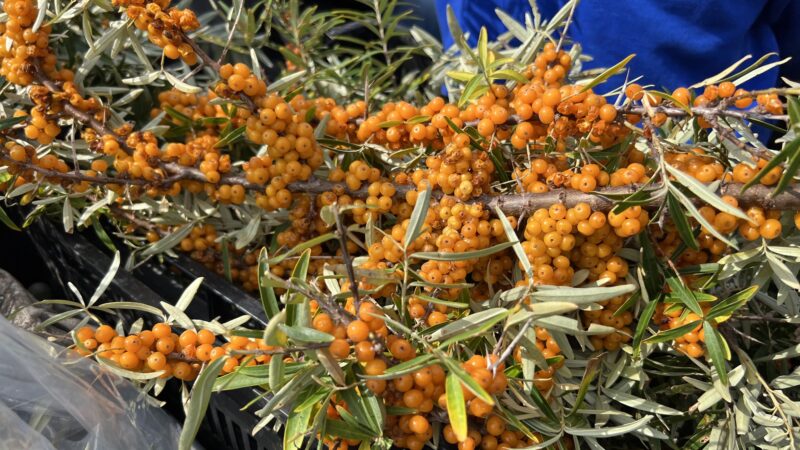
Our first harvest from the Food Forest, planted in 2019, was the understory layer in 2022—asparagus spears pushing through spring soil. Now in 2025, we’re consistently harvesting from the fruiting shrubs, including elderberries, gooseberries, and last week, students harvested beautiful and dangerous sea buckthorn, or seaberries.
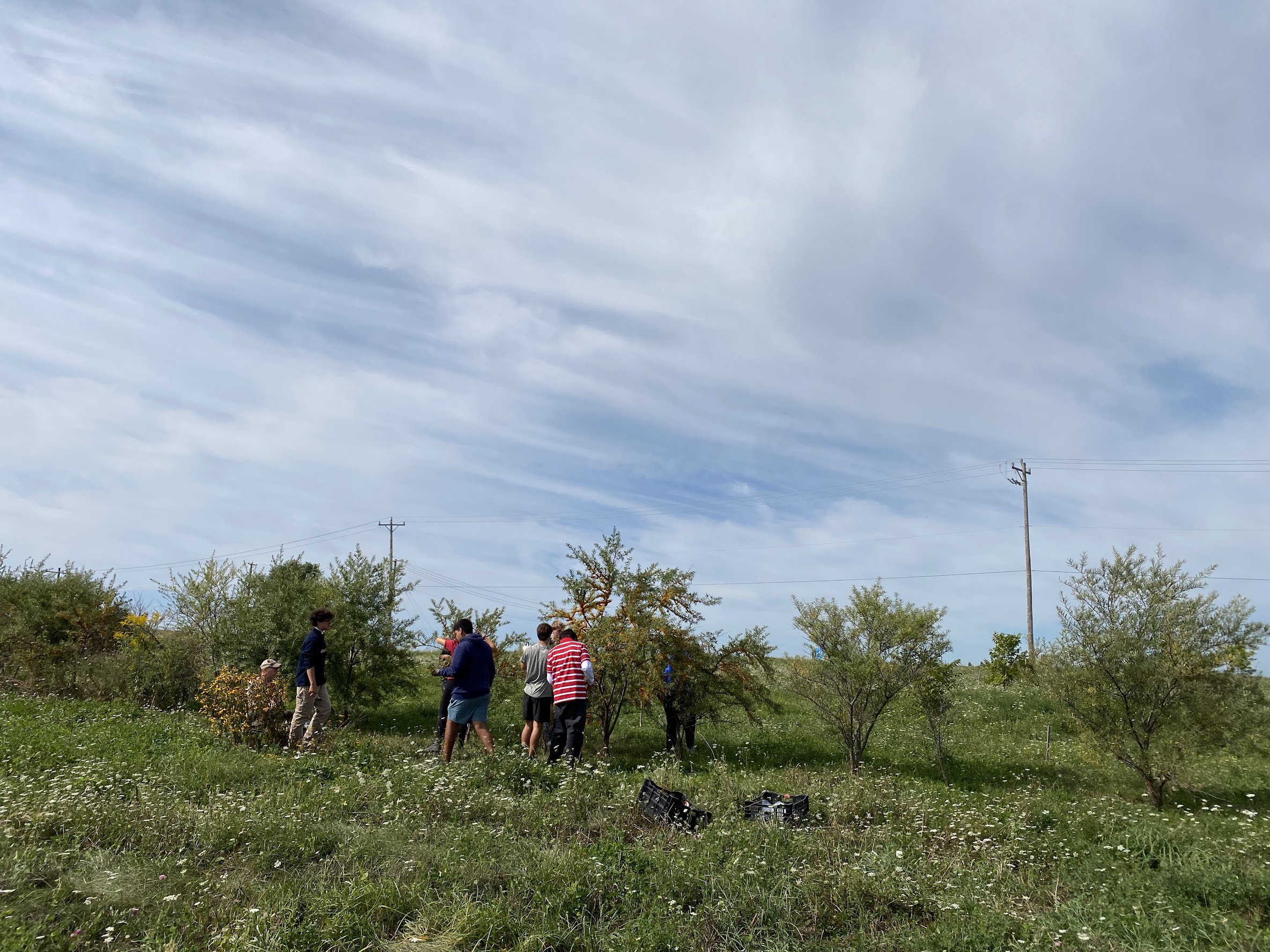
Those vibrant orange clusters earned their “dangerous” reputation from wickedly sharp thorns, but the reward is worth the careful picking. Sea buckthorn berries contain more vitamin C than oranges—up to 15 times more—and also include rare omega-7 fatty acids. Their intensely tart flavor is excellent when used for making jams, juices, and even savory sauces for meats.
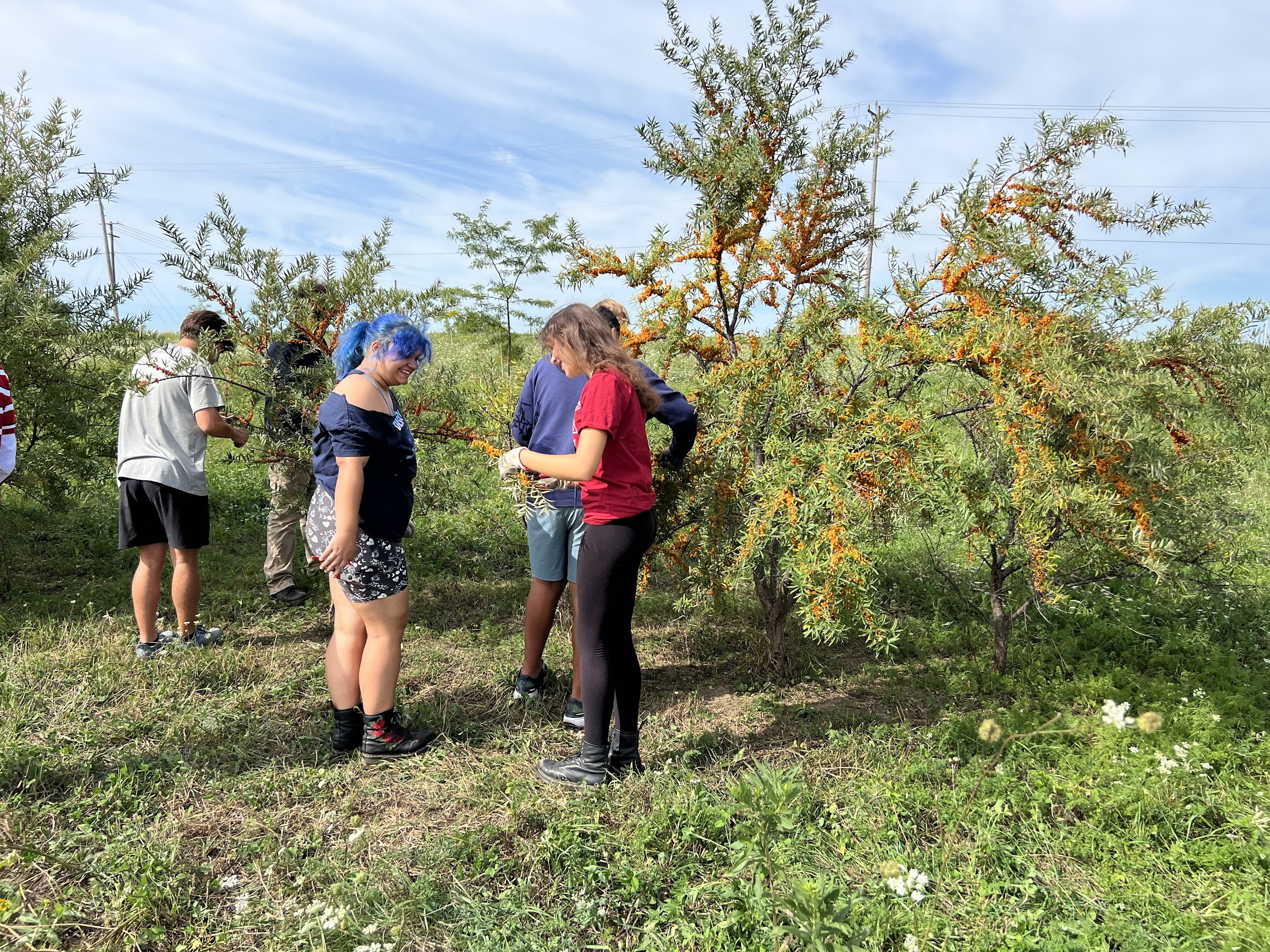
Students donned thick gloves and carefully cut overlapping branches to harvest the berries. This careful harvest also served as pruning for the shrubs, opening up airflow to branches that can expand next season. Additionally, the cuttings were propagated by students to grow new seaberries for further expansion of the Food Forest.
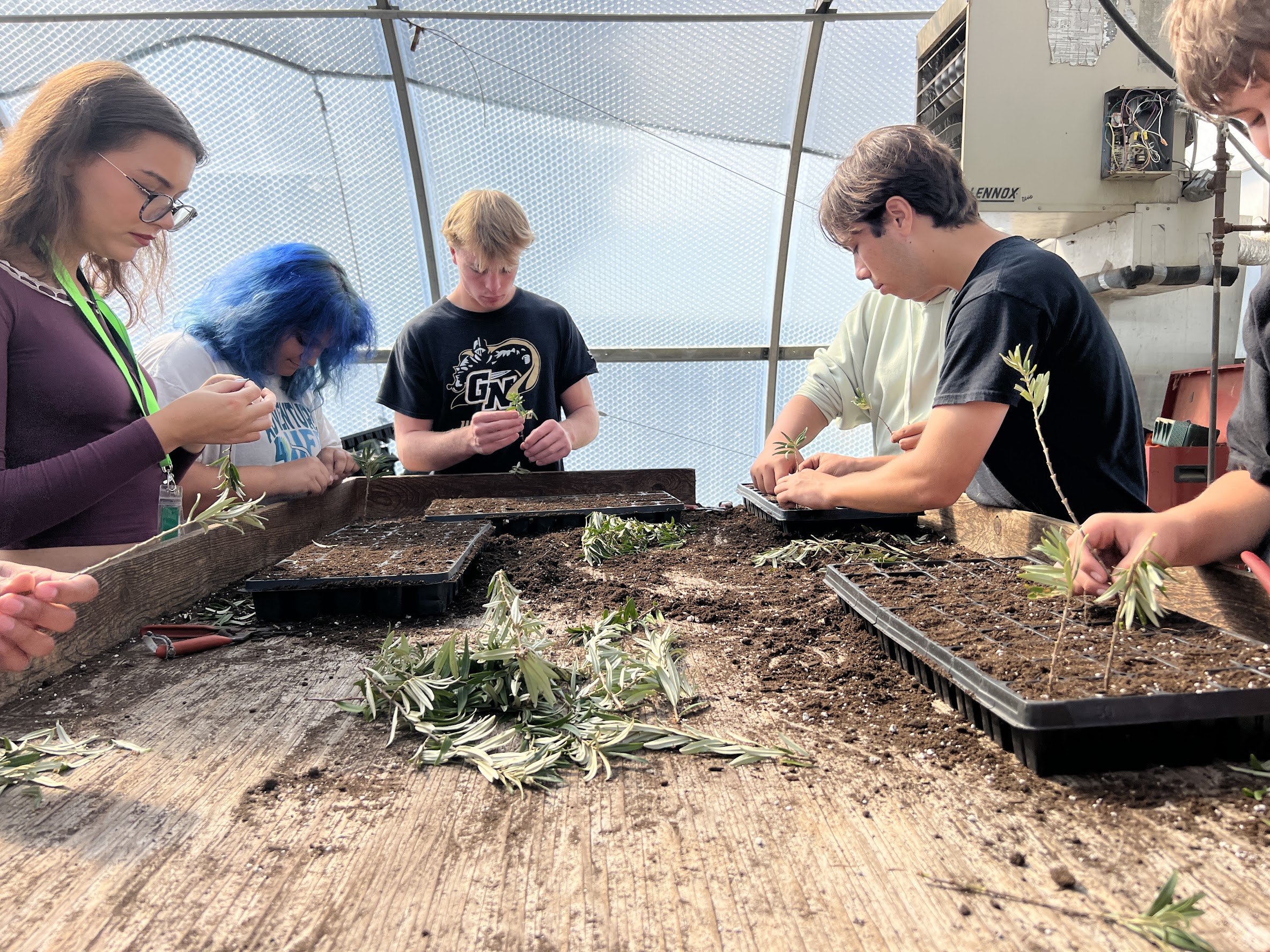
What we don’t harvest becomes a feast for our wild neighbors. Robins, sparrows, and red-winged black birds enjoy the remaining berries. The dense thorny branches provide perfect nesting sites for birds and shelter for small mammals like rabbits. The seaberry shrubs create a living example of how food forests feed entire ecosystems.
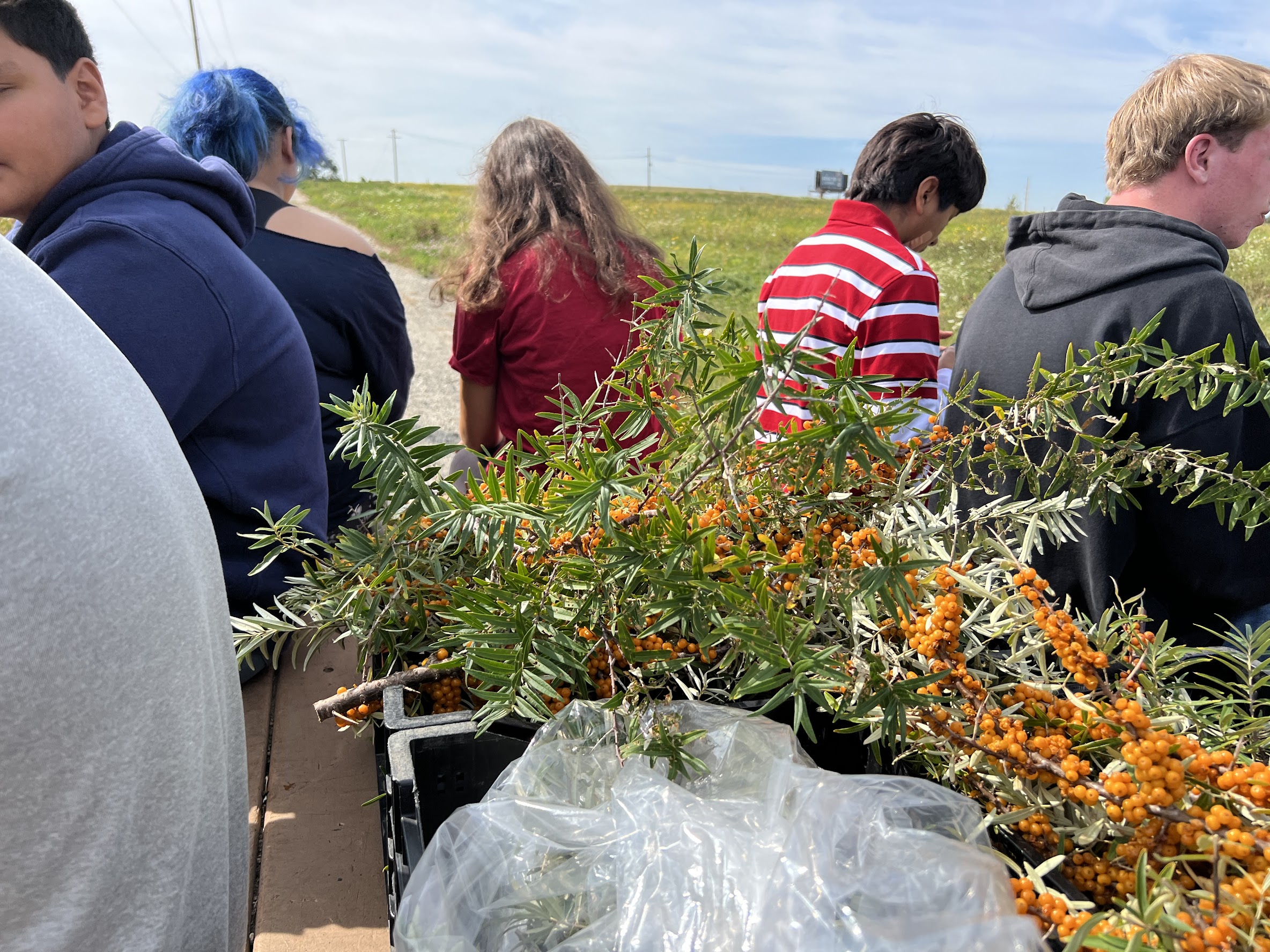
Beyond the kitchen and wildlife value, these hardy shrubs excel as our nitrogen-fixing partners in regenerative systems. Their deep roots prevent erosion while enriching the soil for neighboring plants. From humble asparagus beginnings to this thorny treasure, our food forest proves that patience yields the delicious harvests—for humans and wildlife alike.
Your farmers,
Jeff, Jen and the Liberty Prairie Farm Team
